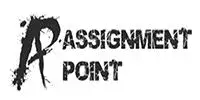A fundamental question to be considered at the outset is whether the collection of data should be done by complete enumeration or by sampling.In complete enumeration, each and every individual of the group to which data are to relate is covered, and information gathered for each individual separately
In Sampling, only some individuals forming a representative part of the group are covered, either because the group is too large or because the items on which information is sought are too numerous.
Complete enumeration may lead to greater accuracy and greater refinement in analysis, but it may be a very expensive and time-consuming operation.A sample designed and taken with care can produce results that may be sufficiently accurate for the purpose of the enquiry, and it can save much time and money.
The information sought may be gathered, from the individuals of the whole group (called the population ) or from those of the sample by one of the three methods:
i) The questionnaire method
ii) The interviewer method
iii) The method of direct observation.
Questionnaire method: Each informant (or respondent) is provided with a questionnaire, usually sent by mail with return postage prepaid, and is asked to supply the information in the form of answer to the questions.
This method can be effective only when the informants have attained a certain level of education .
The drawback of the method is that the informants may not get sufficient interest in the enquiry even if they are sufficiently enlightened. Consequently, the data may involve a high percentage of non-response and thus fail to reflect the true state of the field of enquiry.
Interviewer method: Enumerators go from one informant to other and elicit the required information . This method is used in population censuses. Also, this method has to be employed in case the informants are not all literate or, even if literate, have not attained the requisite educational level .
For instance, if one is interested in family income and expenditure on different items, one may arrange to interview the head of each family and collect the information sought from him. The data collected by this method are likely to be more accurate, since a tactful investigator may persuade the informant to supply the required information and the meaning of each question may be properly explained to him so that the answer may be correct and to the point.
Method of Direct Observation: The enquirer or his assistants get the data directly from the field of enquiry without having to depend on the co-operation of informants.
When data are needed on the height and weights of , say, 200 college students, they will be approached individually and height (say in cm) of each measured with a tape and the weight (say in kg) measured with a weighing balance.
If data are needed on the sentence of a novel by , say, Bankimchandra, the enquirer himself will go through the book and note for each sentence the length i.e. the number of words contained therein.
On the other hand, if data are required on the incidence of blindness among a group of people, one will just observe each member of the group and note whether he or she is or is not blind.
The direct method of data collection may, therefore, involve either measurement or counting or both observation.
















